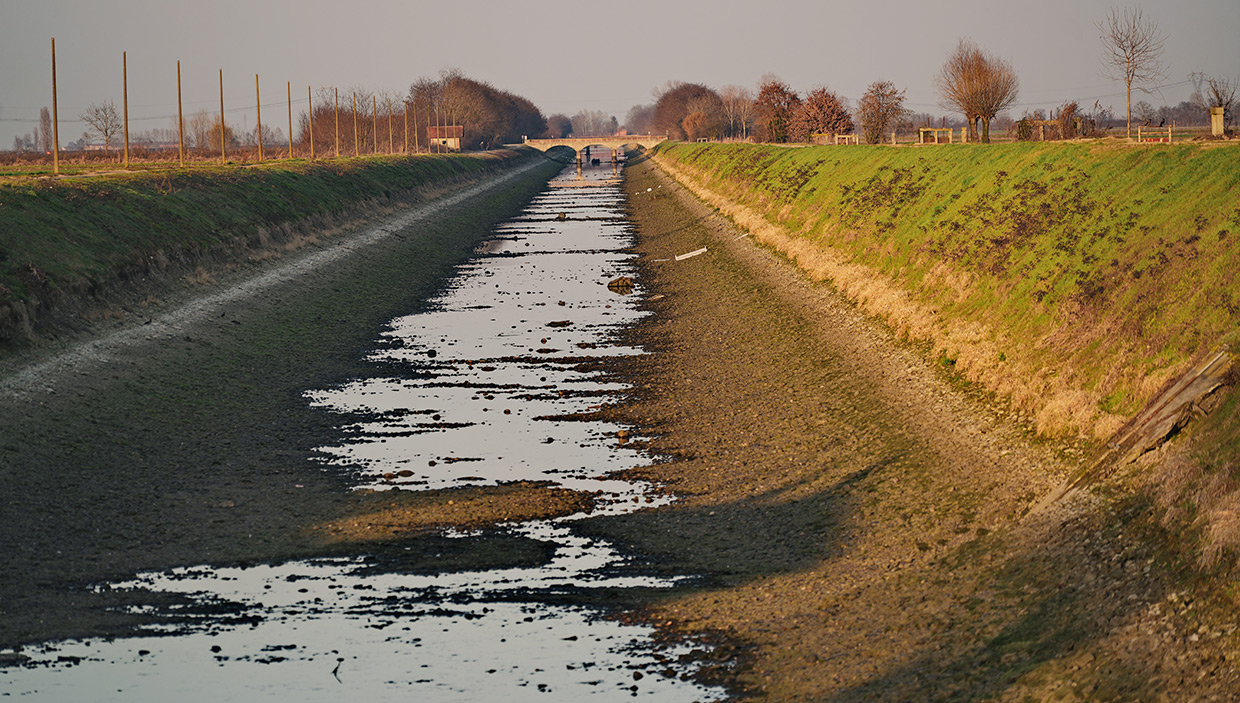In this edition of our bilingual feature, Tom Alberto Bull returns to the Po Valley to update us on the problems facing Europe’s rice producers…

Words by Tom Alberto Bull
Key words
Useful Italian words and phrases to add to your vocabulary
- Il cambiamento climatico
Climate change - Un caso anomalo
A one-off - Un altro anno difficile
Another difficult year - Con il passare del tempo
With the passing of time - La loro capacità
Their capacity - Perfettamente adatti per
Perfectly suited to - Un’invenzione moderna
A modern invention - Le temperature più elevate
The higher temperatures - Una situazione in cui
A situation where - A causa della siccità
Due to drought - Hanno bisogno di
They need - Un uso più efficente
A more efficient use - Nella maniera tradizionale
In the traditional way - Queste nuove alternative
These new alternatives - Bisognerà vedere
It remains to be seen
ITALIANO | RISOTTO A RISCHIO
Nell’estate del 2022 ho pubblicato un articolo sugli effetti del cambiamento climatico sul fiume Po dopo il periodo più lungo di siccità da 200 anni che lo ha ridotto ai minimi storici.
Ma sembra che non si trattasse di un caso anomalo poiché le piogge scarse e uno strato sottile di neve in montagna durante l’inverno segnalano un altro anno difficile in prospettiva.
Man mano che questi avvenimenti meteorologici si ripetono con sempre maggiore frequenza e prevedibilità, le conseguenze a lungo termine per le comunità agricole sono sempre più evidenti. Il caso più lampante riguarda la produzione delle varietà di riso per risotto per la quale la regione è meglio conosciuta.
Con il passare del tempo il clima ha permesso la coltivazione di grani particolari come l’arborio e i carnaroli, che si distinguono da altri grani per la loro capacità di assorbire i sapori e di resistere ad alte temperature di cottura, caratteristiche che li rendono perfettamente adatti per il risotto.
Questo piatto è un’invenzione relativamente moderna, dal momento che la prima ricetta che conosciamo risale al 1809, mentre il famoso Risotto alla Milanese, aromatizzato con lo zafferano, fu inventato nel 1829.
Oggigiorno le temperature più elevate e la riduzione della piovosità hanno creato una situazione in cui l’acqua non è più sufficiente per inondare le risaie.
Negli ultimi due anni più di 33000 ettari di campi di riso sono scomparsi a causa della siccità, costringendo alcuni agricoltori a coltivare nuove varietà oppure riso ‘nuovo prometeo’ creato nei laboratori, che sono più affidabili grazie al fatto che hanno bisogno di una minore idratazione.
Altri agricoltori adottano nuove tecniche di produzione. Questi metodi gli permettono di coltivare ‘riso secco’, che richiede un uso più efficente dell’acqua, senza la necessità di inondare le risaie nella maniera tradizionale. L’acqua rimane sotto terra, per cui non evapora.
Come ha sostenuto il Sig. Cerutti, uno di questi agricoltori pioneristici: ‘Questa tecnologia mi permette di risparmiare dieci volte il volume di acqua che impiegherei nelle colture tradizionali di riso’. Altri agricoltori, purtroppo, stanno gettando la spugna, privilegiando altri prodotti agricoli come il mais.
Queste nuove alternative per la coltivazione del riso offrono all’industria un’ancora di salvezza, ma bisognerà vedere se permetteranno al risotto di essere incluso nei menù nei decenni a venire.
ENGLISH | RISOTTO AT RISK
In the summer of 2022 I published an article on the effects of climate change on the River Po after the longest drought in 200 years had reduced water levels to an all-time low.
But it seems this wasn’t a one-off as a lack of rainfall so far this winter coupled with a thin coating of snow up on the mountains signals another difficult year ahead.
As these weather events become more consistent and predictable the longterm consequences for the local farming community are increasingly apparent, none more so than the production of the varieties of risotto rice for which the region is best known.
With the passing of time the climate has permitted the cultivation of specialist grains such as ‘arborio’ and ‘carnaroli’, which differ from regular grains in their capacity to absorb flavours and stand up to high cooking temperatures, characteristics that make them perfectly suited to risotto.
This dish is a relatively modern invention, the first known example of which dates back to 1809, while the famous Risotto alla Milanese, flavoured with saffron, was invented in 1829.
Nowadays, the higher temperatures and lower rainfall mean that there just isn’t enough water to go around to flood the paddy fields.
In the last two years more than 33,000 hectares of rice fields have been lost due to the drought, forcing some farmers to grow new varieties of rice such as the scientifically created ‘nuovo prometeo’, which are more reliable as they require far less hydration.
Other Italian farmers are adopting new methods of rice production. These methods allow them to grow ‘dry rice’, which requires a far more efficient use of water, making it unnecessary to flood the paddy fields in the traditional way. The water remains below ground, so that it does not evaporate.
As one of these pioneering farmers, Mr Cerutti, stated, ‘This technology allows me to save ten times the volume of water I would employ in traditional rice cultivation’. Other farmers, sadly, are throwing in the towel, turning to different types of crops such as maize.
These new alternatives provide an essential lifeline to the industry, but it remains to be seen if new and innovative techniques can emerge that will keep the classic risotto on our menu for years to come.
Looking to learn more Italian? Discover more in our archive
